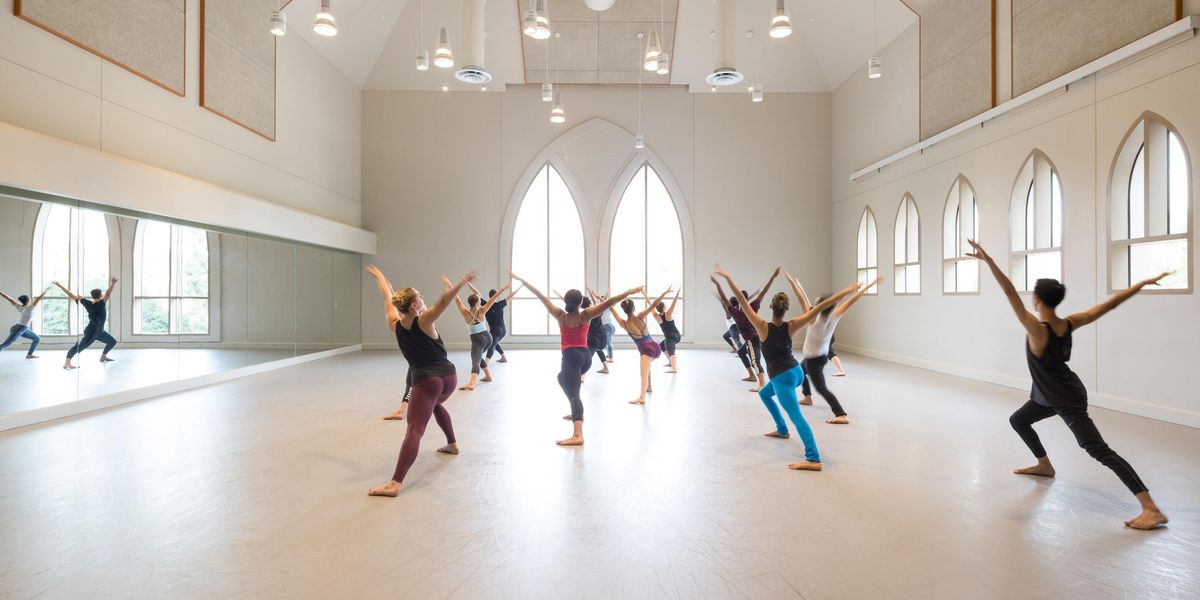On Broadway: Clean Team
Annie’s moppet-moves mop up.
Ready to wipe the floor: the orphans with Annie (Lilla Crawford, top left), photo: Joan Marcus, Courtesy Annie
Chances are pretty good that when you hear the rollicking opening notes of “It’s the Hard-Knock Life,” the second song in the insidious score Charles Strouse and Martin Charnin wrote for Annie, you picture a line of little girls on their knees beside their clanging metal wash pails. That’s because Peter Gennaro’s choreography for the original 1977 production was pretty iconic, too, and both choreographers and audiences have found it very hard to imagine that number any other way.
But the fresh, unexpected version in the current Broadway revival at the Palace Theatre dispels all the Annies that came before. You watch and wait for echoes of the original, as the ragged little girls of Miss Hannigan’s nasty little orphanage bewail their “empty-belly life, rotten, smelly life!” But instead, director James Lapine and choreographer Andy Blankenbuehler unfold a shifting whirlwind of housework-related tableaux that don’t resemble anything you’ve seen before, in Annie or elsewhere.
“The one thing I didn’t want was girls with buckets and scrub brushes,” says Lapine, who left the other particulars of the number up to Blankenbuehler.
“I did an initial pass at the number that was way too choreographed,” Blankenbuehler recalls. “James pushed me to really keep the kids in reality, concentrating on their chores and their relationships to each other.” As he kept trying new things, Blankenbuehler realized that “the action was much more interesting when it was based on a literal action—mopping, pulling a sheet off a bed—rather than trying to create a scrappy character out of a dance step that was more stylized.”
There was another important element that went into the way the number developed: the age and abilities of the performers. Lapine and Blankenbuehler agreed that this Annie was going to acknowledge the gritty side of the story, not just the sunny side. Annie’s friends, ranging in age from 8 to 12, were going to be “kids who were a little rough-and-tumble,” Blankenbuehler says. The girls all had a dance audition, but they were cast mainly on the basis of their singing and acting chops. Rachel Bress, Blankenbuehler’s associate choreographer on the show, says it didn’t take long to spot the strengths and weaknesses of each child.
“We also picked up on that look that says, I’ve hit my limit and can no longer process information,” she notes. “Every now and then, when we could tell that minds were starting to wander, I would turn to the youngest actress, and I would say, ‘Tyrah, what’s happening here?’ And she would say, ‘We’re losing focus.’ And I would say something like, ‘That’s right guys, let’s come back. We have a lot of work to do.’ ”
“Adults lose focus, too,” she adds. “But with the kids, it was our job to get them reenergized and inspired to keep rehearsing. We had to find a balance between getting everything done and not overwhelming the children with too much information and steps.”
They discovered that the girls were at their best in more angular, percussive movement, which lends itself particularly well to the “Hard-Knock Life” music. And then came the question of what they would actually be doing. “I paced my studio for a lot of hours trying to find a really special way to use the cleaning props,” Blankenbuehler says. “I had a lot of bad ideas. I had a lot of good ideas. But the execution was too difficult for the kids.”
The breakthrough happened when the show’s set designer, David Korins, came by Blankenbuehler’s apartment and started goofing around with his two children. “He started mopping the dining-room floor with my kids,” Blankenbuehler recalls. “They were lying on their backs and he had their feet in his hands. He rocked them back and forth. They loved it.”
That idea, if not the specific mopping technique, ended up in the show. After some experimentation, Blankenbuehler determined that the most effective “mopping” took place with the smaller girls wearing mop-heads on their tummies as the bigger girls pull and push them around the floor. It comes across as both hard work and hard play, a perfect visual metaphor for life at the orphanage—and it gets a laugh.
Getting that “hard-knock” mood took work, too, Bress points out. “We had to figure out what the kids could relate to and what made sense to them from an acting standpoint,” she says. “When they understood why they were doing the movement, the steps always looked better and the number more believable. We would say, ‘When was the last time you felt really lonely? Now walk to your place with that feeling in mind.’ Or, ‘When was the last time someone made you mad or hurt your feelings? Imagine a picture of that person in front of you. How would you kick the picture?’ It always made such a difference when Andy and I could communicate the intention of a step in a way that made the kids say, ‘Oooohhhh, I get it.’ ”
And the audience gets it, too, even without the buckets.
Sylviane Gold writes on theater for
The New York Times.




